Your Dream Eco-Friendly Yard is Easier to Obtain Than it May Seem
Clover lawns are one of the most recent lawn trends geared toward eco-friendly landscaping, and many homeowners are realizing the benefits they pose. If you’re looking for a lawn that requires less maintenance and lets you save money in the process, it might be time to hop on the clover lawn bandwagon!
Clover vs Grass: Understanding the Differences
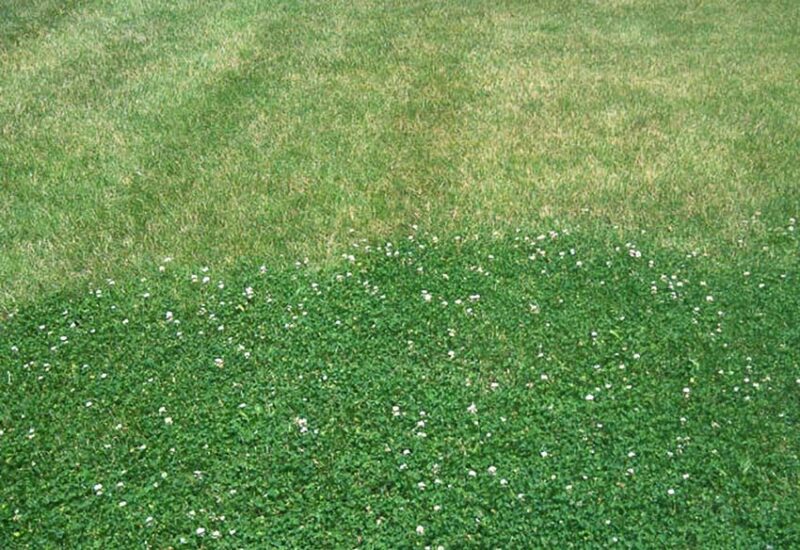
While a lush, green lawn is the ultimate goal for many homeowners, these lawns can sometimes be hard on the environment. Like plenty of people, you might be considering the switch to a clover lawn because of its eco-friendly status. Before deciding, you should note the differences between traditional grass lawns and clover lawns.
Grass Lawn Basics
Grass lawns are the standard choice for many homeowners because they enhance the look of outdoor spaces. It prevents dust and erosion, as well as keeps your yard cool in the summer, and provides a safer, soft place for children to play.
Grass lawns require regular care to keep healthy, green, and lush. This maintenance includes regular mowing, watering, and fertilizing.
Clover Fundamentals
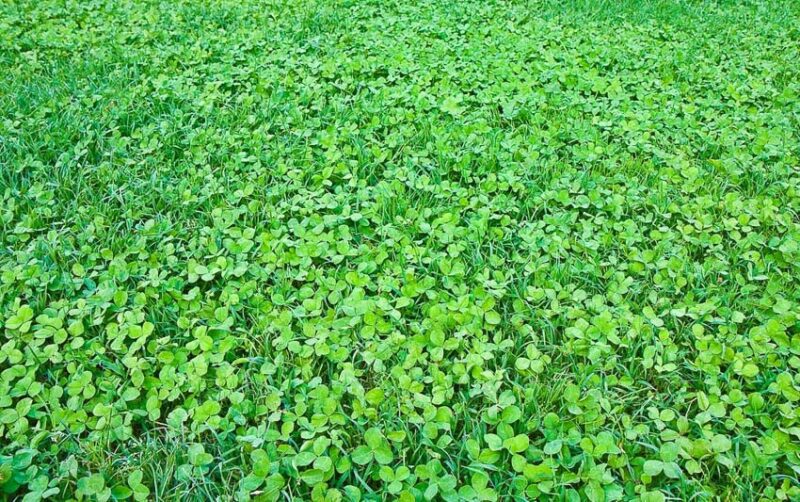

Similarly, clover lawns keep your yard cool and provide a place to enjoy the outdoors. However, they are extremely low-maintenance, which is why they are gaining so much popularity.
Clover requires less watering, mowing, and fertilization compared to traditional grass lawns.
Key Differences Between Grass and Clover Lawns
To determine the type of lawn that’s right for you and your family, consider your personal values and how you use your yard. For heavy traffic, grass holds up better. Some people also consider grass lawns more attractive, so take note of your aesthetic opinion.
On top of requiring less maintenance than grass, clover is also more resistant to pests, weeds, and drought.
Why a Clover Lawn is Better Than a Grass Lawn
Clover lawns bring a lot to the table, including environmental benefits, less maintenance, and a different aesthetic than standard grass lawns.
Environmental Benefits
When it comes to the environment, clover lawns shine. Grass lawns require harsh chemicals and fertilizers to stay lush and green, while clover is a nitrogen-fixing plant that provides the soil with nutrients. This means that instead of competing with trees and other plants in your yard, clover can actually help them grow.
It attracts wildlife and beneficial pollinators, and because it requires less water and energy than grass, clover is gaining a reputation as an eco-friendly lawn choice.
Maintenance Advantages


One of clover’s biggest advantages over grass is that it doesn’t grow as quickly, which results in less mowing. This also leads to less water and fertilizer requirements. As mentioned, clover yards are also less likely to be affected by diseases and pests.
Additionally, clover as ground cover doesn’t require any chemicals, saving you time, money, and labor.
Aesthetic Appeal
Clover lawns don’t grow as tall as grass, making for a neat and tidy lawn that is aesthetically pleasing. Clover also blooms during the summer when it’s not mowed, which can add to its visual appeal.
The Many Benefits of a Clover Lawn
If you find lawn maintenance to be a huge chore, a clover yard offers some pretty exciting benefits—namely, less watering and maintenance like fertilizing and mowing.
Less Watering
Grass lawns require around an inch of water per week, which is usually spread over two or three waterings. Clover lawns require less water, which means savings on your water bill and less time watering.
Less Mowing
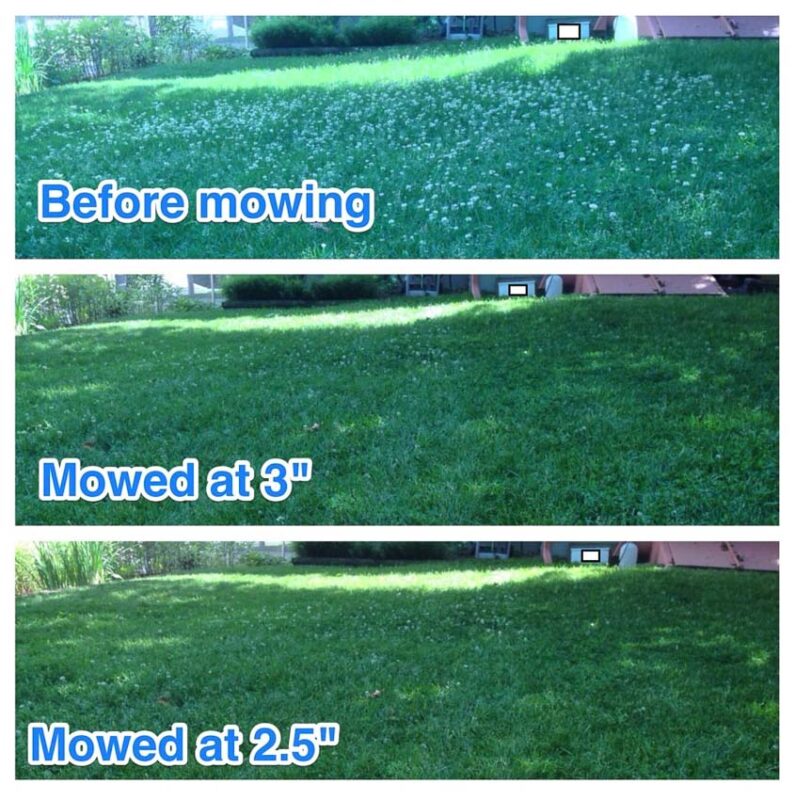

For grass lawns, you usually have to mow every 4 to 10 days in peak growing conditions. However, clover lawns only need to be mowed a few times per year.
White clover is the best clover variety for lawns since it grows 2 to 8 inches tall. It’s usually mowed in the mid-summer to deadhead the blossoms, and then again around 4 to 6 weeks before the first freeze.
Natural Fertilization
Like all legumes, the deep root systems of clover plants provide the soil with nitrogen, which makes them a great choice for organic lawns. Legumes draw in nitrogen from the air and pull it down to their roots. The roots help break up heavily compacted soils, too, which benefits surrounding plants, trees, and shrubs.
Less Weeding
Clover ground cover is less likely to be overtaken by weeds. This results in less time and money using herbicides, which is better for the environment.
Attraction of Wildlife and Pollinators
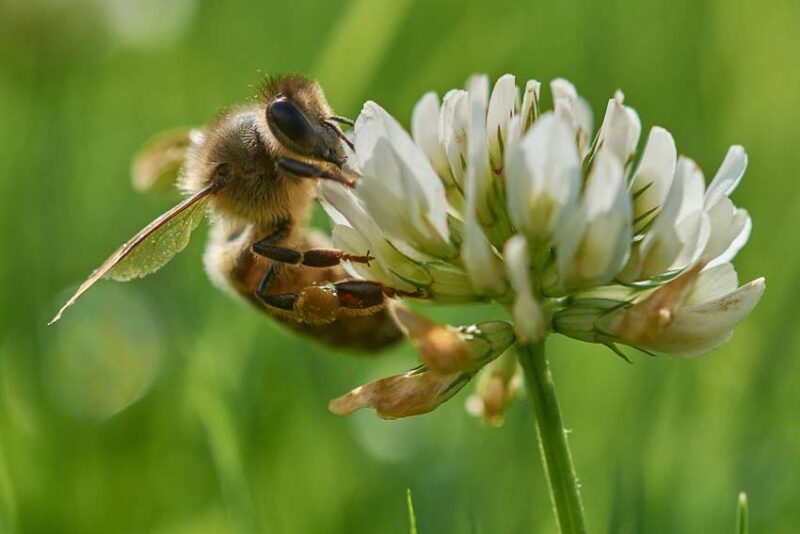

As s forage crop, clover attracts wildlife to your yard, like deer, rabbits, and wild turkeys. It can also entice small rodents to eat the clover in your lawn rather than the expensive plants in your flower garden.
Another benefit to clover is that it draws in pollinators like bees and butterflies, which is particularly helpful if you have fruit trees in your yard.
Is a Clover Lawn Right for You?
For some homeowners, switching from a grass lawn to clover is a big decision. If you’re on the fence, consider the following points to determine if a clover lawn is right for you.
Assessing Your Lawn Goals
Before the 1870s, lawns were only grown by wealthy people. Then, the Industrial Revolution made lawn mowers accessible to the average Joe, which brought lawns into popularity. Today, people typically grow lawns for their visual appeal.
However, lawns provide other benefits, like dust control, preventing erosion, noise reduction, and keeping your lawn cool in the summer.
If a clover lawn is something you’re considering, you should examine your reasons for growing a lawn. If clover solves the same problems that grass can for less money, time, and resources, switching is a no-brainer.
Climate Considerations
Making the switch to clover can have a big impact on the world around you.
Clover lawns use fewer resources and eliminate the need for harsh chemicals or fertilizers. They also provide a habitat for wildlife and beneficial pollinators.
Budget and Maintenance Preferences
Saving money could be one of the biggest reasons to consider a clover lawn, especially if you’re paying for a lawn care service to mow your lawn every week. You can also save money in the following areas:
- Switch from weekly mowing to less than four mowings per year.
- Zero fertilizer costs.
- Lower water bill.
- No chemicals and pesticides.
Clover provides you with all of the benefits of a lawn without the drawbacks of caring for grass, while saving you money in the process.
How to Plant a Clover Lawn
The process of growing clover is easy and straightforward. It’s also quick to germinate and does well in many soil types.
Selecting the Right Clover Variety
The Trifolium genus of clover encompasses over 250 species. While any type would be suitable for growing in your yard, the two most popular varieties are used for short-term growth:
- White clover (Trifolium repens)–Also known as Dutch clover, white clover is the best clover variety for lawns. It is a short-lived perennial native to Europe and Asia that has naturalized in many parts of the United States. It spreads quickly via rhizomes and reseeding.
- Microclover (Trifolium repens var. ‘Pirouette’ and ‘Pipolina)–A smaller variety of white clover has become trendy. With dainty leaves and small delicate flowers, microclover is less aggressive than Dutch clover.
Both of these types of clover are low-growing and require less frequent mowing than standard grass does. For sunny areas, microclover does best. It produces fewer blooms and can be cut shorter, however it turns brown in the winter.
This clover is best grown in combination with turfgrass to maximize the amount of ground cover, especially to withstand heavy foot traffic.
Choose a Planting Method
You can use one of the following methods to transition your yard to clover:
Preparing the Soil
Before planting a new clover lawn, you should till the soil around 4 to 6 weeks before planting. Water to encourage roots to sprout, and then a day or two before planting, rake the soil smooth to remove any weeds.
Seeding and Establishment
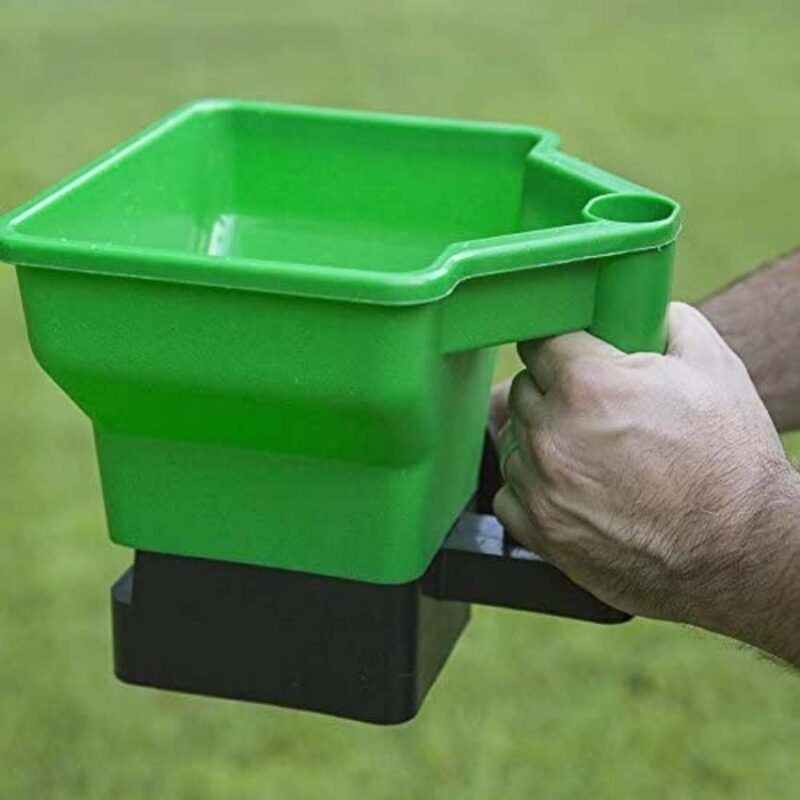

Clover seeds are very small, so mixing them with something can help ensure even distribution. You can mix your seeds with a low-nitrogen fertilizer, compost, sand, sawdust, or lime.
A broadcast spreader or hand spreader with very fine settings can help you distribute your seeds in large areas. In smaller areas, you can either spread it by hand or use a small condiment shaker.
Inoculate your clover seeds with Rhizobium bacteria before planting to ensure they can fix nitrogen in the soil. Some clover seed brands come pre-inoculated, but you can also purchase an inoculant and do it yourself.
Care and Maintenance Tips
Clover is quick to sprout, usually starting to pop out of the soil within 2 or 3 days. You should keep it moist by lightly watering. However, be sure not to saturate the soil with too much water, since this could wash the seed away.
Newly planted clover ground cover may only require mowing for a few weeks. Continue to water as needed, but wait to mow until the clover is at least 3 inches tall.
Some clover varieties don’t bloom flowers until the second year, and you should allow your clover to go to seed to remain established in your lawn.
The Pros and Cons of a Clover Lawn
Generally speaking, you have three choices when it comes to clover in your yard, and each option has advantages and disadvantages.
You could:
- Treat clover as a weed in your grass lawn and try to eradicate it,
- Grow clover instead of grass, or
- Grow a combination of grass and clover.
Advantages of Clover Lawns
Up until the 1950s, clover was commonly found in lawn mix. Once broadleaf herbicides came into vogue, however, many people started treating clover as a weed instead of taking advantage of it.
Grass and clover are excellent companion plants. Clover benefits grass by providing extra nitrogen, improving soil health, and reducing water requirements. It also provides extra shade and loosens compacted soils.
Potential Drawbacks and Solutions
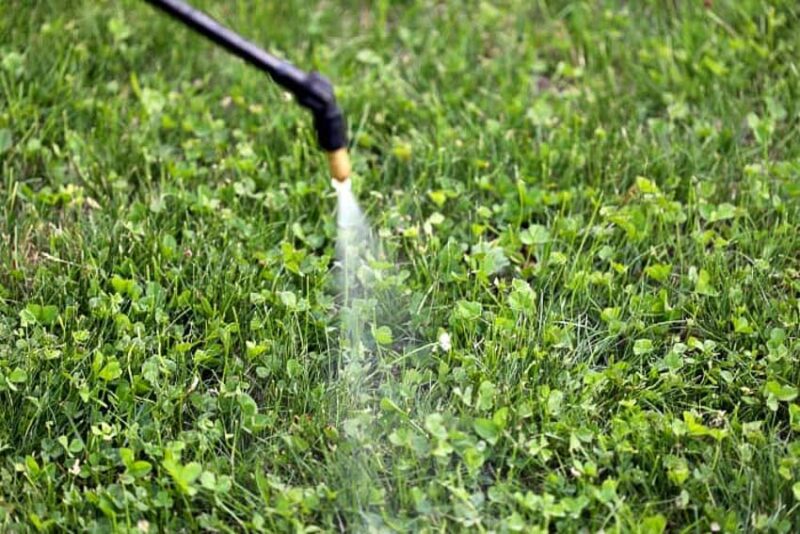

It’s important to note that there are a few disadvantages to growing a 100% clover lawn.
Grass and weeds will still try to pop up, which can be quite the battle to get rid of since you can’t use broadleaf herbicides. Clover is also less tolerant of foot traffic than grass, so if you have pets or kids that like to play in the yard, it’s wise to steer away.
You can think of the challenge of growing a clover monoculture as being just as hard as growing a grass lawn free of clover. White clover lawns often die in the winter, which can also leave your lawn exposed to heavy spring rains and flooding.
Dutch clover is less aggressive than grass, so it’s susceptible to becoming patchy and clumpy. When you grow both plants together, each one benefits from the other.
Clover as an Eco-Friendly Landscaping Trend
Several municipalities across the U.S. are struggling with a water crisis. This threatens the ability to grow large expanses of grass lawns since frequent watering is not an option.
In these areas, clover has become a popular option for eco-friendly ground cover since it does not require as much water as grass.
The Rise of Sustainable Gardening
Sustainable gardening and environmentally friendly lawn care practices are becoming more well-valued each year.
Not only are grass lawns expensive and laborious to maintain, but they also contribute to greenhouse gases, pollution, and decreased biodiversity. Using clover to aid with sustainability helps to solve problems like water shortages, pesticide use, and pollution.
How Clover Lawns Support Eco-Friendly Landscaping
In ecology, biodiversity helps sustain the delicate balance of nature, and grass’s biggest problem is that it reduces biodiversity.
Clover lawns support the environment by providing habitats to wildlife and promoting soil health and fertility. This allows a diverse population of species to thrive, each playing a vital role in the health of your lawn. It also means you no longer need to use pollutants like herbicides and fertilizers.
Other Environmentally-Friendly Lawn Alternatives
Reducing the amount of dedicated space for grass in your lawn can save you a decent amount of money while helping the environment. While you’re considering incorporating clover into your lawn, take note of some of these alternatives to grass:
- Xeriscaping
- Ground covers
- Native plants
- Vegetable gardens
- Rain gardens
- Artificial turf
- Ornamental grasses
- Perennial flower beds
- Hardscaping
With the right landscaping design, creating an eco-friendly yard that’s just as inviting as a large expanse of grass is possible.
Frequently Asked Questions About Clover Lawns
Is Clover Invasive?
Yes, clover has been declared an invasive species in some parts of the U.S. While some clover species are more invasive than others, it is generalized as an invasive plant that spreads through seeds and rhizomes.
How Long Does It Take for a Clover Lawn to Establish?
Clover germinates more easily than grass, and you should see sprouts within two to three days of planting. Several factors play into how long it takes to fully establish, including climate, soil pH, water levels, and time of year.
You can usually start mowing new clover within six weeks of planting.
Can I Mix Clover and Grass in My Lawn?
Grass and clover grow well when mixed together, and both plants benefit each other. Clover adds nitrogen to your soil and won’t choke out your grass’s roots.
Do Clover Lawns Attract Bees and Other Insects?
Clover attracts insects like bees, wasps, and butterflies, which can be a drawback if you have an allergy to them. However, many important insects are facing declining numbers due to reduced habitat and pesticide use, so clover lawns are an eco-friendly alternative to grass.
Are Clover Lawns Pet-Friendly?


Clover lawns are a pet-friendly alternative to grass lawns. It’s non-toxic and requires fewer harsh chemicals. It also stands up better to pet urine than grass because of its deep roots.
Can Clover Lawns Handle Foot Traffic?
Clover isn’t as tolerant to foot traffic as grass, but it can still handle moderate activity. For high-traffic areas, like around play structures and outdoor furniture, you can use mulch to reduce the amount of damage to your lawn.
How Do I Control Weeds in My Clover Lawn?
For best results, you should kill weeds thoroughly before planting a clover lawn. This is done by preparing the soil properly to get rid of weeds before planting your clover seed. Because of its deep roots and vigorous growth, clover competes more successfully with weeds than grass does. However, if weeds become a problem, use a selective clover as a ground cover herbicide that won’t kill the clover.
What is the Best Time to Plant a Clover Lawn?
Clover germinates in very cool soils, 38°F to 42°F (3°C to 5°C), and the best time to plant is in the early spring.





